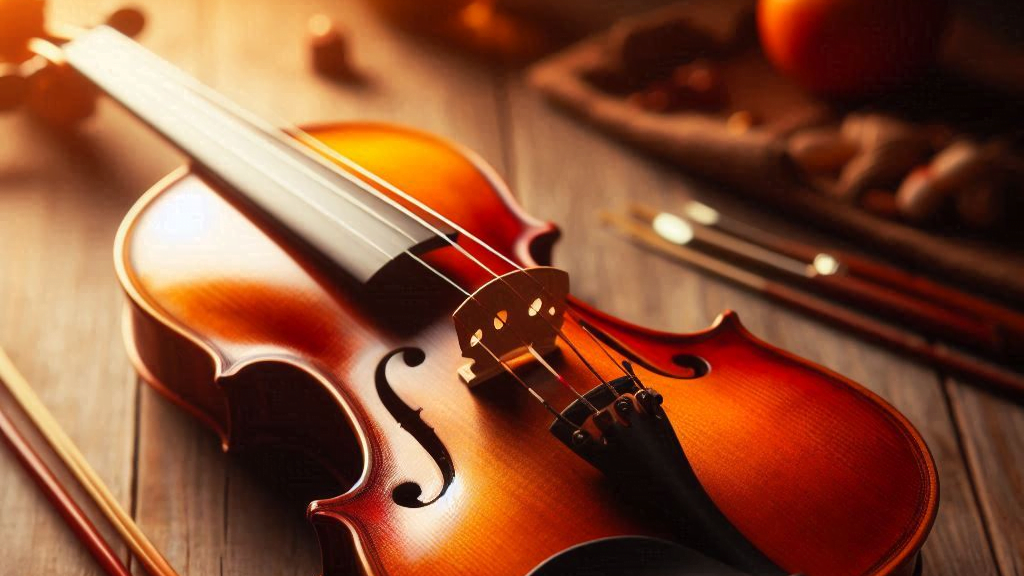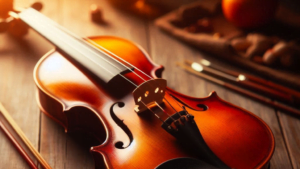In the world of music, we often speak of mastery—the precise control over our instrument, the hours of practice, the relentless pursuit of perfection. Yet, there lies another, subtler path: the art of surrender. This path isn’t about control but about yielding, listening, and allowing the music to flow through us. For those who wish to explore this deeper connection with their instrument, the violin can be a powerful guide. Here, we’ll journey into the practice of “following” the violin, letting it lead us like a dance partner, and discovering how to become the best follower in the world.
Deep Listening: Finding the Instrument’s Voice
Before even touching the strings, take a moment to hold your violin as if cradling a companion. Feel its weight in your hands, the texture of the wood against your skin. Close your eyes and breathe deeply, becoming aware of the subtle vibrations that emanate from the instrument. Every violin, like every person, has its own character and voice. To truly play it, we must first listen.
Exercise: Silent Holding
- Sit comfortably with the violin in playing position.
- Close your eyes and breathe deeply, focusing on the connection between you and the instrument.
- Let go of any intention to play. Simply listen. Feel the violin’s presence, its potential.
- Ask silently, “What do you want to express?” and remain open to whatever feeling or idea arises.
- Stay in this stillness for 5-10 minutes, cultivating a sense of communion with your instrument.
This exercise opens you to the idea that playing the violin is not a monologue but a conversation. It primes you to hear its subtle nuances and respond to its guidance.
Following the Path of Least Resistance
When working with the left hand, think of each finger as a brushstroke on a canvas. The fingers should fall naturally on the strings, not with force but with intention. It is about finding the most effortless path to each note, where the fingers move as if guided by the strings themselves.
Exercise: Finger Drops
- Hold the violin and gently place your first finger on the A string.
- Instead of pressing down hard, imagine your finger is like a feather landing softly on the string. Allow the natural weight of your hand to do the work.
- Play a note with the lightest touch that still produces a clear sound. Notice how little effort is needed.
- Continue with each finger, moving slowly up the scale. Pay attention to the sensation of each note and the feedback from the string.
- Practice this daily, focusing on relaxation and ease, feeling each finger finding its “home” on the string.
This practice encourages a deep sensitivity to the violin’s response, letting you feel where each note “wants” to be.
Letting the Violin Lead: Improvisation as Dialogue
Improvisation is a powerful way to deepen this relationship. Instead of playing a set piece, let go of any preconceived notions of what should be played. Allow the violin to “speak,” and follow where it leads.
Exercise: Free Form Improvisation
- Begin with a single note. Play it slowly, drawing out the sound, listening to how the violin resonates.
- Let your fingers wander, exploring different notes and positions. Don’t worry about playing the “correct” notes; focus on how each one feels.
- Respond to the instrument’s vibrations—if a certain note feels resonant, linger there. If it feels dissonant, move gently to a new place.
- Imagine you are accompanying the violin, not controlling it—like a partner in a dance.
- Spend 10-15 minutes in this state of exploration, allowing the violin to guide your movements.
This practice teaches you to let go of rigid technique and embrace the instrument’s natural tendencies, fostering a sense of being led rather than leading.
Cultivating the Art of Surrender
To be the best follower is to surrender completely to the moment. This means releasing all expectations and judgments and allowing yourself to become an empty vessel through which music flows.
Exercise: Surrender to Sound
- Pick a simple, slow melody that you enjoy. Close your eyes and play it very slowly, almost meditatively.
- As you play, focus not on getting it “right” but on how it feels. Listen deeply to every sound, every vibration.
- Imagine each note is guiding you to the next, not because you planned it, but because it’s what the music asks of you.
- If your mind wanders or you feel tension, pause, breathe, and come back to the present.
- Over time, you’ll notice a shift where the notes seem to play themselves, flowing naturally without conscious effort.
Conclusion: The Dance of Music and Being
In your journey to become one with the violin, remember that true mastery is not about control but about deep listening, sensitivity, and surrender. When you allow the violin to lead, you may find yourself in a dance where the boundary between musician and instrument dissolves, and music arises naturally, effortlessly, as a reflection of the Dao.
Embrace this path not just in music but in life. Let your heart be open, your fingers light, and your mind free. In this way, you will discover that the music plays you as much as you play it.


